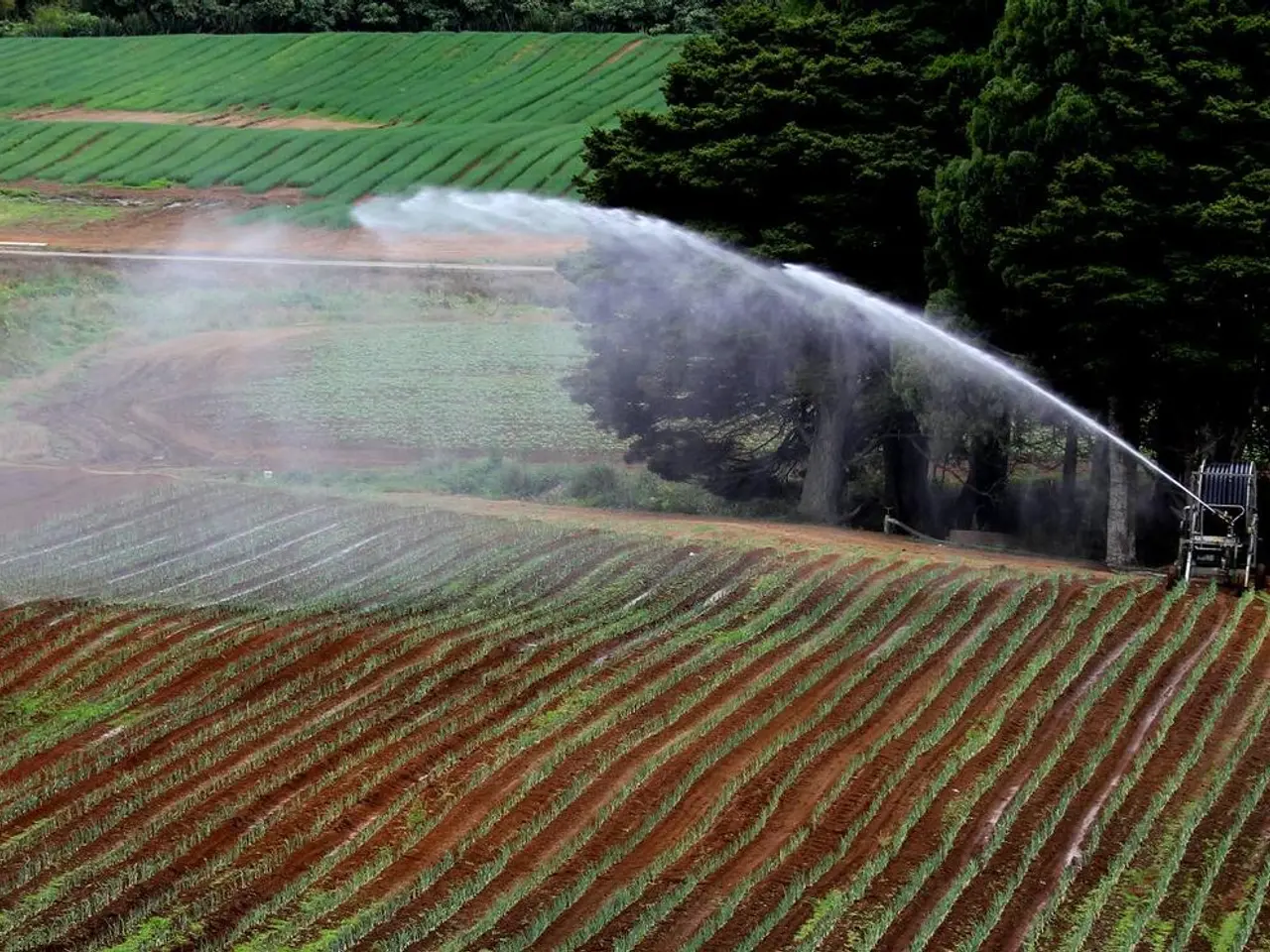Guide for Implementing Drip Irrigation for Mango Trees: A Sequential Process
In Chennai, India, a city known for its tropical climate and sandy soils, the benefits of drip irrigation in mango farming are becoming increasingly apparent. This efficient watering system offers significant advantages, including reduced water usage, precise delivery of water to the root zone, and improved yield and fruit quality.
Drip irrigation is particularly beneficial in regions like Chennai with limited water resources, as it minimizes water wastage and reduces soil erosion and weed growth.
To set up a drip irrigation system for mango trees, the process generally involves the following steps:
- Assess the farm layout and water source: Determine the area to be irrigated, the location of the mango trees, and the water source capacity.
- Install a filtration system: To prevent clogging of drip emitters, filtration is essential, ensuring clean water flows through the system. Sand or gravel filters are crucial for removing impurities from the water.
- Lay main and sub-main pipelines: Connect from the water source to the field area, usually using high-density polyethylene (HDPE) pipes for robustness and flexibility.
- Place drip lines and emitters at tree bases: Drip lines with emitters should be run along the rows, with emitters placed near the roots of each mango tree to provide precise watering.
- Include a pressure regulator and control valves: Maintain uniform water pressure and allow control of irrigation timing and flow. Pressure regulators keep the system adjusted to avoid overflow streams to specific trees.
- Schedule irrigation based on mango tree water needs: Adjust irrigation frequency and duration, especially during flowering and fruit set stages, for optimal growth.
Advanced drip irrigation systems can also integrate precision farming techniques from land preparation to harvest, ensuring zero chemical input and sustainable farming practices.
In Chennai's tropical climate, drip irrigation ensures conservation of water and nutrients by delivering water directly to where needed, thus boosting efficiency and crop health. This approach leads to better fruit size, quality, and higher yields while conserving scarce water resources critical to the region.
Moreover, a well-maintained drip irrigation system increases the value of mango farmland, making it more appealing to potential buyers.
Drip irrigation can result in cost savings due to minimal water wastage and reduced work requirements. It is compatible with fertigation, a common method of passing nutrients directly through the water system lines, further enhancing crop health.
UV-resistant emitters/drippers should be used to prevent damage from prolonged sun exposure. Adjustable emitters are ideal for mango trees as they allow for controlling the water stream according to the tree's needs.
Mature trees require less frequent but larger watering, around 80 liters for each tree every week, while young mango trees need more frequent watering, especially during the establishment stage, with around 10-15 liters every day for the initial few months.
Position markers around the root zone, ordinarily setting a couple for each tree, and set up equal lines to the sub-main lines, running them along every section of mango trees. Spot channels close to the water source to take out residue and other junk, protecting markers from plugging up.
Periodically change watering frequency during the warm summer months and reduce it during the monsoon season. A siphon may be necessary to ensure sufficient water pressure, especially on large mango farmlands.
Embrace drip irrigation for a sustainable and efficient approach to mango farming in water-scarce regions like Chennai.
- By adopting drip irrigation, home-and-garden enthusiasts in tropical regions like Chennai could witness similar improvements in their mango trees' yield and quality, as it does for commercial farmland.
- drip irrigation technology can enhance the lifestyle of urban gardeners by reducing water consumption and maintaining a healthy garden, making it synchronized with data-and-cloud-computing solutions to optimize watering schedules based on climate and plant needs.
- As drip irrigation systems evolve, they are integrating with home-automation technology, allowing homeowners to monitor and control their home-and-garden watering systems remotely, thus promoting the smart home-and-garden trend in the future.




